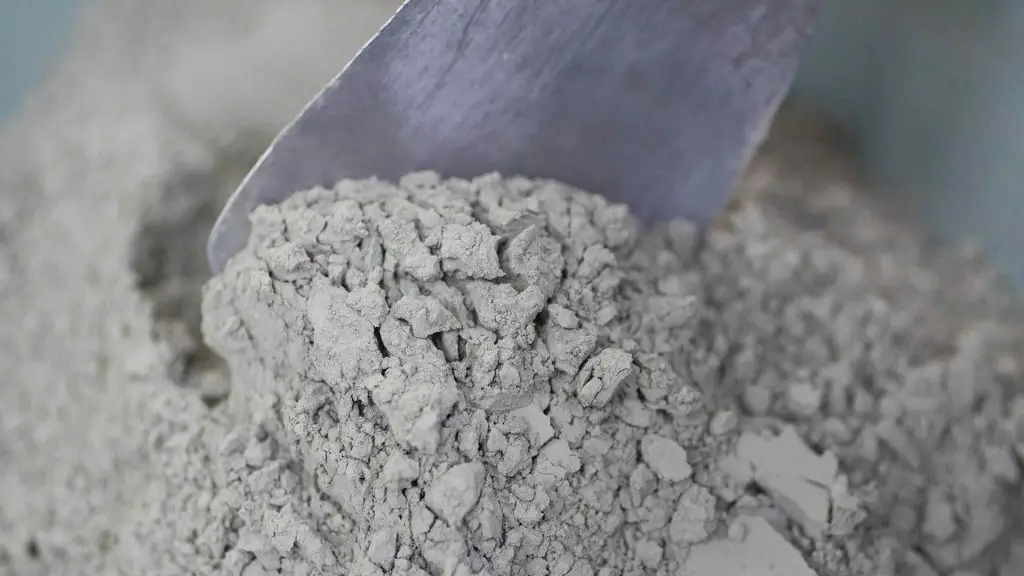Portland slag cement is known by several names across the world, this cement led to increasing in India’s overall cement manufacturing output.
This PSC cement could only be produced with glassy granulated slag.
In this article you’ll learn:
So, if you’re ready to go with it, this article is for you.
Let’s dive right in.
What is Portland Slag Cement?
This PSC cement is a form of Portland cement made by combining Portland cement clinker, gypsum, and granulated blast furnace slag in the proper quantities, then thoroughly and thoroughly grinding the mixture.
It may be made by separately milling Portland cement clinker with gypsum and blast furnace slags.
After that they are fully combine the two while maintaining the proper ratios.
This manufacturing technique produces blended cement, which resembles regular Portland cement in terms of physical characteristics.
Manufacturing Process for Portland Slag Cement:
- The production was primarily formed to use the waste material known as blast furnace slag.
- Utilising blast furnace slag is a waste product in blast furnaces.
- Granulated slags account for 25 to 65% of the Portland cement clinker in production.
- The percentage of blast furnace slag varies from nation to nation that can reach a maximum of 85% when blended.
- It can be produced by grinding Portland cement clinker or blast furnace slags separately.
- Before mixing clinker, gypsum, and granulated blast furnace slag in the appropriate proportions and grinding them thoroughly.
- Separated grinding is frequently used to make this cement with variable quantities of Portland cement clinker and blast furnace slags to match market demand.
- This cement has a low heat of hydration because it contains some blast furnace slag.
- Cement clinkers provide a structure with its initial strength, and the addition of blast furnace slag increases that strength over time.
Properties of Portland Slag Cement:
The physical characteristics include fineness, setting time, soundness, and strength, those are listed below:
| Physical Properties | Requirements |
| Fineness Specific Surface Area | 225 m2/kg |
| Soundness Le Chatelier Autoclave test | 10 mm 0.8 % |
| Setting Time Initial Setting Time Final Setting Time | 30 minutes 600 minutes |
| Compressive Strength (minimum) @ 3 Days @ 7 Days @ 281 Days | 16 MPa 22 MPa 33 MPa |
During the first 28 days, the rate of hardening of cement in mortar or concrete is slower than conventional Portland cement.
Later, the strength of the cement gradually rises.
After 12 months, the achieved strength of Portland slag cement is equivalent to or exceeds than regular Portland cement.
| Chemical properties | Per cent, Max. |
| Magnesium Oxide (MgO) | 8.0 |
| Sulphur trioxide (SO3) | 3.0 |
| Sulphur (S) | 1.5 |
| Loss on ignition | 5.0 |
| Insoluble residue | 4.0 |
Storage:
Cement should be kept in a location that allows for easy inspection.
The site should be weather-tight to avoid moisture from entering the room.
Packing:
Cement can be packaged as follows:
- IS: 2580 compliant jute sacking bag.
- IS: 11761 paper bags with several walls.
- Lightweight jute in accordance with IS: 12154.
- HDPE/PP weaved bags in accordance with IS: 11652.
- IS: 12174-compliant jute synthetic union bags.
- Approved composite bag.
- Each bag should contain 50 kg of cement net. It’s also available in 25 kg, 10 kg, 5 kg, 2 kg, and 1 kilogram net weights.

Marking & Grade of Portland Slag Cement:
As specified in the standard, the cement bag must bear the following markings:
Name of the manufacturer and his registered trademark.
The cement type is ordinary Portland Cement 33 grade.
“Use no hooks” net amount in kilogram.
A batch number indicating packaging week, month, and year.
Manufacturer’s address If any, what type and percentage of additives or improvers were used.
Sampling:
The samples will be taken and examined within one week after delivery.
If this is not practicable, samples should be kept in airtight containers and examined within three months.
Tests:
Cement testing in laboratories should be performed to assess the physical and chemical characteristics of cement.
Rejection:
If the cement fails to meet any of the standard’s requirements, it may be rejected.
Advantages of Portland Slag Cement:
- The PSC cement may be used to improve post structures.
- There is less permeability.
- It is more resistant to chemical assault.
- A substantial study found that adding ground-granulated blast furnace slag increases the intrinsic characteristics of concrete in fresh and hardened phases.
Disadvantages of Portland Slag Cement:
- Cold weather concreting is not practicable due to the low heat of hydration.
- Frost damage in concrete might result from a fairly reduced rate of durable development in the cold weather.
Uses of Portland Slag Cement:
- PSC cement is used in marine construction projects as it resists chlorides, sulphate-containing water, alkali metals, acidic seas, etc.
- It is used in large-scale concreting operations like the construction of dams as it has a low heat of hydration.
- Portland cement can be applied to large-scale concrete that may be used for concrete in hot climates.
- It may be a less expensive choice than regular Portland cement for typical concreting projects.
- It may be utilized to build maritime structures.
Also read: White Portland Cement | Pozzolana Portland cement | Ordinary Portland Cement
Conclusion:
PSC Cement is made up of 25-70 percent granulated slag, 3 percent gypsum, and the remainder clinker.
Granulated slag is primarily a non-metallic material composed of more than 90% glass and lime silicates and alumina-silicates.

Related Posts
Rock Quality Designation(RQD): Building Strong Foundations
Spread Footing
Masonry Cement
Plain Cement Concrete
Concrete Efflorescence
Concrete Pile
Stepped Footing
Fineness Modulus of Coarse Aggregates
Difference between Condo and Apartment